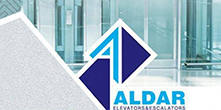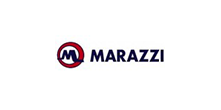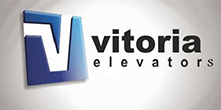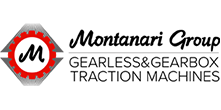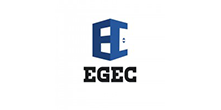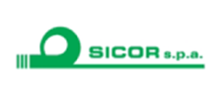Elevator Prices
Elevators are one of the most important engineering innovations in the world of architecture and construction, as they play a vital role in facilitating and improving mobility within modern buildings. Elevators represent a quantum leap in vertical mobility, enabling people and goods to move between different floors efficiently and comfortably..
In this research, we will present the factors affecting the determination of elevator prices, and we will review the importance of understanding these factors in making the right decisions when choosing the right elevator for the project. We will also provide models and case studies for some projects to understand how to analyze cost and comprehensive estimate A. Definition of elevators and their role in vertical mobility within buildings
Elevators are vertical transport devices used to transport people and goods between different floors of buildings. Elevators are one of the modern engineering innovations that have greatly influenced the architectural design and comfort of daily life.
The elevator consists of a cab with doors that open and close automatically, and the cab is moved vertically by an electric or hydraulic impeller system. The device is installed inside an elevator well consisting of multiple components that work harmoniously to achieve vertical movement of the cab.
Elevators are an essential part of modern buildings that have several floors, such as hotels, offices, malls, hospitals, and apartments. In addition to improving mobility and saving time to reach high floors, elevators enable the elderly and people with mobility disabilities to use the building easily and comfortably..
The role of elevators is vital in promoting efficiency and sustainability in modern buildings, as they can be used to provide additional space for other useful purposes, rather than allocating ample space to stairs that consume a lot of space..
In short, elevators play a vital role in facilitating vertical mobility within buildings and improving the comfort and ease of access to different places, enhancing the efficiency of infrastructure and improving the user experience within the building. for elevator prices, with the aim of achieving sustainability and efficiency in construction and architectural design.
The importance of understanding elevator prices to determine the right type of needs
Elevator Price Determining Factors
Determining elevator prices is influenced by a number of factors that must be considered when choosing, designing, and installing the elevator type. Among these factors are:
Building height and required capacity:
Tall buildings: buildings with many floors and large heights require powerful elevators and are able to transport personnel quickly and safely.
Capacity needs: The price of the elevator is affected by the number of people or the amount of goods that can be transported on each trip.
Elevator Type and Propulsion Technology
Hydraulic elevators: use a hydraulic system for vertical lifting and landing of the cab, suitable for buildings of medium height.
Geared and non-geared electric elevators: They use a gear-operated electric impeller system to lift the cab, and are used in most buildings of various heights.
Elevators without engine room (MRL): It is a modern option that is space-saving and suitable for buildings with limited spaces.
Customization and benefits:
Basic vs. Advanced features: Includes features such as digital screens, voice control, glass doors, and can increase elevator cost.
Customization and interior design options: Customers can choose a custom interior design, choose preferred materials and colors, which may affect the overall cost.
Complexity of installation and available space:
New Buildings vs. Renovation and Improvement: Installing an elevator in an existing building may require additional structural modifications, which may increase the cost.
Impact on the general area of the building: Installations may affect the general space inside the building and may require the installation of additional elevators in some cases.
Safety and compliance with industry standards:
Compliance with safety and security standards: The elevator must be designed and equipped in accordance with industry standards and security systems to ensure the safety of passengers.
Compliance with local laws and licenses: Local laws, licenses and technical specifications for elevators must be complied with.
Brand and manufacturer:
Company reputation and previous submissions: The reputation of the elevator manufacturer may affect its price and quality.
Popular Brands vs. Lesser-Known Companies: Elevator Prices May Vary Based on Manufacturer Brand and Market Popularity.
All these factors affect the determination of elevator prices, and customers must consider all available factors and project needs before making a final purchase decision..
Complexity of installation and available space
Complexity of installation:
The installation of the elevator is one of the important factors that affect the determination of its price.
Elevator installation in new buildings may be easier compared to installation in existing buildings.
In some cases, elevator installation in existing buildings may require additional structural modifications, such as cracking walls or equipping necessary openings..
Available space:
Providing the right space for the installation of the elevator is an important part of the planning and design process.
Some buildings have limited space to install elevators, which may require the use of MRL elevators that provide the necessary space.
Solutions & Conditioning:
Some sites and buildings may require the utilization of advanced engineering solutions to conveniently adapt elevator installation.
Designing customized elevators to meet the needs of special buildings may require consultation with a specialized engineering team to ensure compliance with structural and structural requirements.
Determining the complexity of installation and the availability of suitable space can affect the cost of the elevator and the time required to complete the installation process. It is important that these factors are thoroughly evaluated and appropriate solutions are selected to ensure proportionality and effectiveness in the installation of the elevator in the particular building..
Cost Analysis and Estimation
When the type of elevator is selected and its different specifications are determined, it becomes necessary to analyze the cost and make an accurate estimate of the total cost of installing the elevator. Cost and estimation analysis includes the following elements:
Basic components of cost:
Elevator components and equipment: This includes cab, doors, electrical and hydraulic systems (if the condition requires it), control system, panels, rails, ropes, and other devices.
Installation and labor costs: includes the costs of equipping the well, installing components and systems accurately to the required specifications, and the wages of specialized labor in the installation process.
Additional costs:
Maintenance and ongoing service contracts: The cost of future maintenance of the elevator and the needs of periodic service and ongoing maintenance should be taken into account to ensure the safety and performance of the elevator in the long term.
Upgrade and modernization costs: In the future, there may be a need to upgrade the elevator or update some components to keep pace with technological development or to meet the changing needs of users.
Cost analysis and estimation should be carried out carefully and accurately, taking into account all influencing factors. This helps determine the suitability of the chosen elevator for the project and the client's budget. In addition, accurate analysis helps control costs and reduce potential risks, ensuring that the project is successfully executed according to the required specifications and at the best possible value..
Examples of residential buildings with limited spaces.
When space is limited in residential buildings, designing and installing elevators can become a challenge. Here are some examples of possible solutions for residential buildings with limited space.:
Elevators without engine room (MRL):
- Engine Room Lift (MRL) is the ideal solution for buildings with limited space.
- These elevators do not require a conventional engine room, which saves additional space in the construction.
- The design of these elevators allows less space to be used in the well and enables additional space to be used for other purposes.
Customized and integrated design:
- It may be necessary to design a custom elevator to suit the limited space and requirements of the building.
- Custom design involves precise cab dimensions and the use of innovative materials and technologies to make the most of available space.
Compact shape elevators:
- The design of the elevators with a compact shape that is specially made to suit narrow and limited spaces can be adopted.
- These elevators come in small dimensions that allow them to be installed in narrow spaces without affecting the overall design of the building.
Glass elevators:
- Glass elevators may be the ideal choice for buildings with limited space, as they enhance transparency and make the space appear larger..
- Glass elevators use a contemporary design that makes them blend beautifully with the interior decoration of the building.
Conclusion
By organizing elevators well and using innovative designs and elevators dedicated to limited spaces, the use of space within the building can be improved and provide the best experience for residents without compromising the quality and efficiency of vertical transportation..


